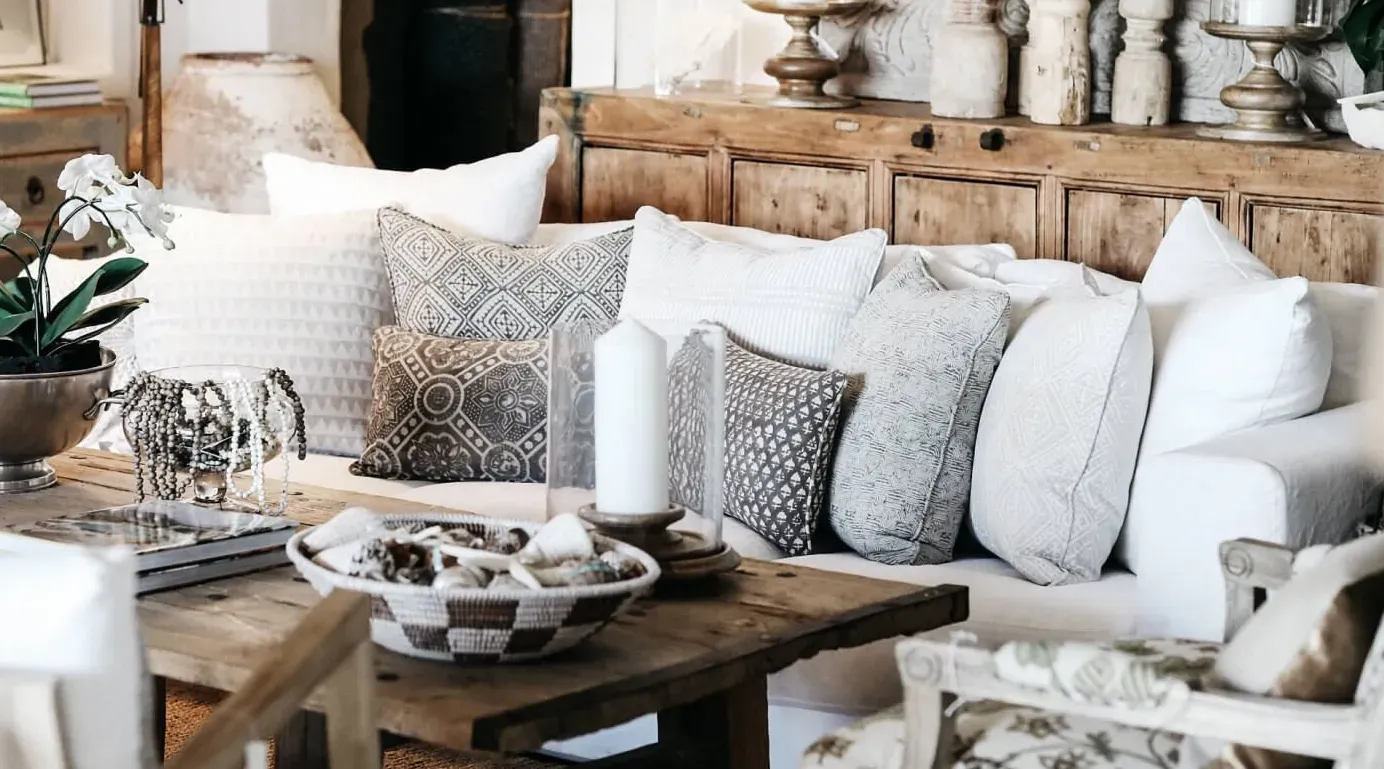The Sensory Home: Using Scent, Sound, and Texture to Enhance Your Living Space

By
Shrusti Naik
Posted on August 28, 2025. 10 mins

The Sensory Home: Using Scent, Sound, and Texture to Enhance Your Living Space
Introduction

For most Indians, the idea of home has always been deeply emotional, woven with rituals, memories, and sensory experiences. Studies on residential well-being increasingly show that design is not just about aesthetics or furniture layout, but about how a space feels. According to a 2024 Knight Frank India report, over 68% of Indian homebuyers now consider wellness features as essential in residential spaces, a shift driven by rising urban stress and the post-pandemic redefinition of comfort. While natural light and ventilation are often emphasized, three often-overlooked sensory elements, scent, sound, and texture, play an equally powerful role in shaping how we experience our homes.
This blog explores how Indian homeowners can intentionally design for the senses, blending tradition, science, and modern design principles to create a living space that not only looks beautiful but also nurtures well-being.
Scent and Memory: Designing Atmospheres through Fragrance
Scent is one of the most powerful triggers of memory. In India, where every festival, season, and ritual has a distinct fragrance, from marigold garlands in Diwali to sandalwood incense in a pooja room, incorporating scent into home design creates layers of emotional resonance.
Research suggests that olfactory cues can reduce stress and enhance focus. A 2025 Statista India survey on wellness preferences revealed that over 45% of urban Indians are investing in aromatherapy products for their homes. In practical terms, this could mean integrating natural elements like fresh jasmine plants in balconies, using brass incense holders in living rooms, or opting for essential oil diffusers in bedrooms.
The key is intentionality, choosing scents that match the purpose of each space. Citrus works well for kitchens and workspaces due to its energizing properties, while lavender or chamomile are better suited for bedrooms to promote relaxation. Unlike air fresheners, these choices tie into cultural practices while supporting healthier living. Might as well take a look at The Resurgence of Traditional Indian Architectural Elements in Modern Homes.
Soundscapes for Harmony: Balancing Silence and Energy
In a country where noise pollution is one of the leading urban health concerns, India ranks among the top five globally for high decibel exposure, sound management in homes is more than luxury; it is necessity.
Sound design operates on two levels: eliminating unwanted external noise and curating meaningful internal soundscapes. Architectural features like double-glazed windows, acoustic panels, and thicker curtains can help filter out urban chaos. But beyond noise reduction, the sounds we add to a home shape its atmosphere.
For example, many modern Indian homes now incorporate indoor water fountains, which not only enhance vastu principles but also produce calming white noise. Soft instrumental music during dining or meditation hours, or even subtle smart-home-enabled playlists that shift through the day, create a rhythm of living. Interestingly, developers in premium Indian residential projects are beginning to highlight acoustic planning as a differentiator, signalling the growing importance of auditory well-being in real estate. With all this, here is another way to enhance your home by Choosing the Right Color Palette for Each Room
Texture as a Design Language: Feeling the Home
Touch is often underestimated in design, yet it defines how we interact with our environment daily. In India, texture has always been central—be it the coolness of Kota stone in Rajasthan havelis, the grain of teak wood doors in South India, or the woven comfort of khadi fabrics.
Today, designers are reviving this tradition by mixing natural textures with contemporary finishes. A recent Godrej Interiors survey (2024) found that over 52% of Indian urban homeowners prefer natural tactile materials like wood, stone, and cotton over synthetic ones, associating them with authenticity and durability.
Thoughtful layering of textures can transform homes: jute rugs add grounding warmth to living rooms, silk cushions bring festive luxury to seating, and rough stone cladding in entryways creates tactile drama. By consciously incorporating variety, smooth alongside coarse, matte alongside glossy, homeowners can achieve a multi-sensory richness that visual design alone cannot deliver. Besides. here are some Design Choices That Can Actually Increase Your Property Value
Integrating the Senses: Towards a Holistic Home
The most powerful sensory homes are those where scent, sound, and texture work together to tell a coherent story. For example, a pooja room with sandalwood fragrance, the faint ring of temple bells, and smooth marble flooring engages multiple senses to heighten the spiritual experience. Similarly, a bedroom designed with calming lavender scents, acoustic dampening, and soft linen textures promotes deeper rest.
Urban Indian homeowners are increasingly blending traditional practices with modern design solutions—aromatherapy diffusers sitting next to brass diyas, acoustic panels hidden behind jali-style woodwork, and textured upholstery chosen not only for looks but for tactile comfort. This confluence reflects a larger trend: the desire to reclaim home as a sanctuary in the middle of fast-paced, overstimulated urban life. Also check out Fractional Ownership of Real Estate in India 2025
Conclusion

Designing a sensory home is not about luxury, it is about intentional living. By curating the scents, sounds, and textures around us, Indian homeowners can create environments that support focus, reduce stress, and evoke cultural belonging. As Indian real estate evolves to include wellness features, homeowners too must look beyond surface aesthetics and embrace sensory design as a practical, everyday tool for better living. Besides, take a look at these Kid-Friendly Interiors That Aren’t an Eyesore
Ultimately, the homes that stay in our memory are not the ones with the most expensive interiors, but the ones that smelled of ghee lamps during Diwali, echoed with laughter during monsoons, and felt cool under bare feet in summer. A sensory home, then, is not a trend but a return to timeless wisdom, designed to be lived in, not just looked at.
For those in pursuit of their dream home, investment opportunities, or a sanctuary to call their own, Jugyah provides top housing solutions with its intelligent technology.
#£## Frequently Asked Questions
Q1. What is a sensory home in the Indian context? A sensory home in India refers to designing spaces with fragrance, sound, and tactile elements, like incense, music, and natural textures—that align with cultural practices and enhance well-being.
Q2. How can I add natural scents to my home? Using jasmine plants, sandalwood incense, or brass aroma diffusers are popular Indian methods. Each space can have a unique scent depending on its function.
Q3. Is soundproofing affordable for Indian homes? Yes, basic acoustic solutions like heavy curtains, carpets, and double-glazed windows are increasingly accessible. Builders in metros now offer these features in mid-range housing.
Q4. Why are textures important in Indian home design? Textures like wood, stone, jute, and silk bring cultural familiarity, comfort, and variety, making homes feel more authentic and inviting.
Q5. Can sensory design increase property value in India? Yes, premium projects already highlight wellness and sensory features. Homes that feel comfortable and calming are more appealing to buyers, enhancing long-term value.